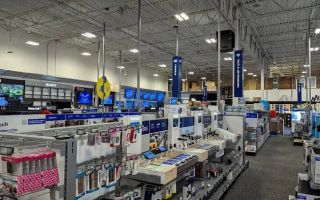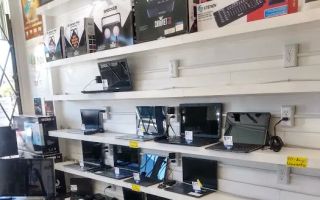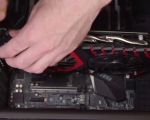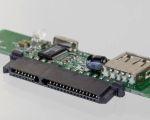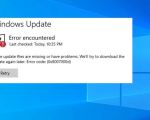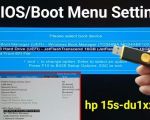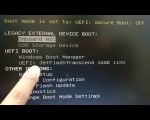How to Ensure Your Computer Repair Service Isn’t Installing Keyloggers
If you’ve ever had your computer repaired, you may have wondered whether the service could potentially compromise your privacy by installing a keylogger or other malicious software. The idea of someone secretly recording your keystrokes is enough to make anyone uneasy. But the good news is that there are steps you can take to ensure your computer repair experience is safe and secure. In this article, I’ll walk you through how to identify and prevent keyloggers from being installed on your computer during a repair.

Walmart Tech Services
3201 E Platte Ave, Colorado Springs, CO 80909, USA
1. What Is a Keylogger and Why Should You Be Concerned?
Before we dive into how to protect your computer, let’s take a moment to understand what a keylogger is and why it’s a major concern for your privacy. A keylogger is a type of surveillance software that records every keystroke you type on your computer or mobile device. This means that anything you type, including passwords, emails, and credit card numbers, could potentially be recorded without your knowledge.

Best Buy
4210 Centerplace Dr, Greeley, CO 80634, USA
1.1 Types of Keyloggers
There are two main types of keyloggers: hardware and software. Hardware keyloggers are physical devices that can be inserted between your keyboard and computer, while software keyloggers are malicious programs installed on your system. In both cases, the goal is to monitor and capture your keystrokes in real time. Understanding how these work is key to recognizing and preventing them.
1.2 Why Are Keyloggers Used in Computer Repair?
Unfortunately, not all computer repair services are trustworthy. In some cases, malicious technicians may install keyloggers as part of a cybercrime operation. This can happen if your computer is being repaired by an untrustworthy technician or if the repair service itself is not reputable. While this is rare, it’s still a risk that every computer owner should be aware of.
2. How to Recognize a Keylogger Installed on Your Computer
If you suspect that a keylogger might have been installed on your device, it’s crucial to look out for certain signs. Although keyloggers are designed to run discreetly, there are some red flags you can watch for:
2.1 Slower System Performance
One of the first signs that something is amiss is a noticeable slowdown in your computer’s performance. Keyloggers often use up system resources, which can cause your computer to run more slowly than usual. If you notice a significant drop in performance, this may be worth investigating further.
2.2 Unexplained System Changes
If your computer’s settings change without your input, it could be a sign that something is being altered behind the scenes. For example, new programs might appear in your startup menu or your antivirus software might be disabled without any action from you.
2.3 Unusual Network Activity
Keyloggers can also send the information they collect to remote servers. If you notice unusually high network activity or your internet connection is being used more than normal, this could indicate that a keylogger is transmitting data.
3. Steps to Take Before You Take Your Computer for Repair
It’s important to take a few precautions before handing your computer over to a repair service. Here are some steps you can follow to protect your privacy:
3.1 Backup Your Data
Before taking your computer to a repair shop, always back up your data. This ensures that you have a copy of your important files in case anything goes wrong. It also allows you to monitor your computer’s state more closely after repairs are completed.
3.2 Choose a Reputable Repair Service
Make sure the repair shop you choose has good reviews and is known for its trustworthy service. You can look for reviews online or ask for recommendations from friends or family. Reputable repair shops will have strict policies about customer privacy and data security.
3.3 Request Transparency During the Repair Process
Ask the repair technician to be transparent about the repairs they’re performing. A good technician should be willing to explain what they’re doing and show you the work they’re completing on your device. If they seem secretive or unwilling to answer your questions, consider seeking service elsewhere.
4. Steps to Take After Your Computer Is Repaired
Once you get your computer back, it’s important to perform a thorough check to make sure no malicious software, such as keyloggers, has been installed during the repair process.
4.1 Run Antivirus and Anti-Malware Scans
After receiving your computer, run a full antivirus and anti-malware scan to detect any harmful software that might have been installed. Make sure your antivirus software is up-to-date to catch the latest threats.
4.2 Monitor Your Computer’s Activity
In the days following the repair, monitor your computer’s performance and network activity. If you notice any signs of unusual behavior, take action immediately by running more detailed scans or seeking professional help.
4.3 Change Your Passwords
If you suspect that a keylogger has been installed, it’s important to change your passwords as soon as possible. Start with your most sensitive accounts, such as banking and email, and work your way down the list. Using a password manager to store your new, stronger passwords is a good idea to ensure security.
5. Conclusion
While the risk of a keylogger being installed during a computer repair is relatively low, it’s always better to be safe than sorry. By taking the proper precautions before, during, and after the repair process, you can protect your privacy and ensure that your computer is free from malicious software. If you ever feel uncomfortable with a repair service or notice suspicious activity, don’t hesitate to get a second opinion or seek assistance from a trusted professional.




